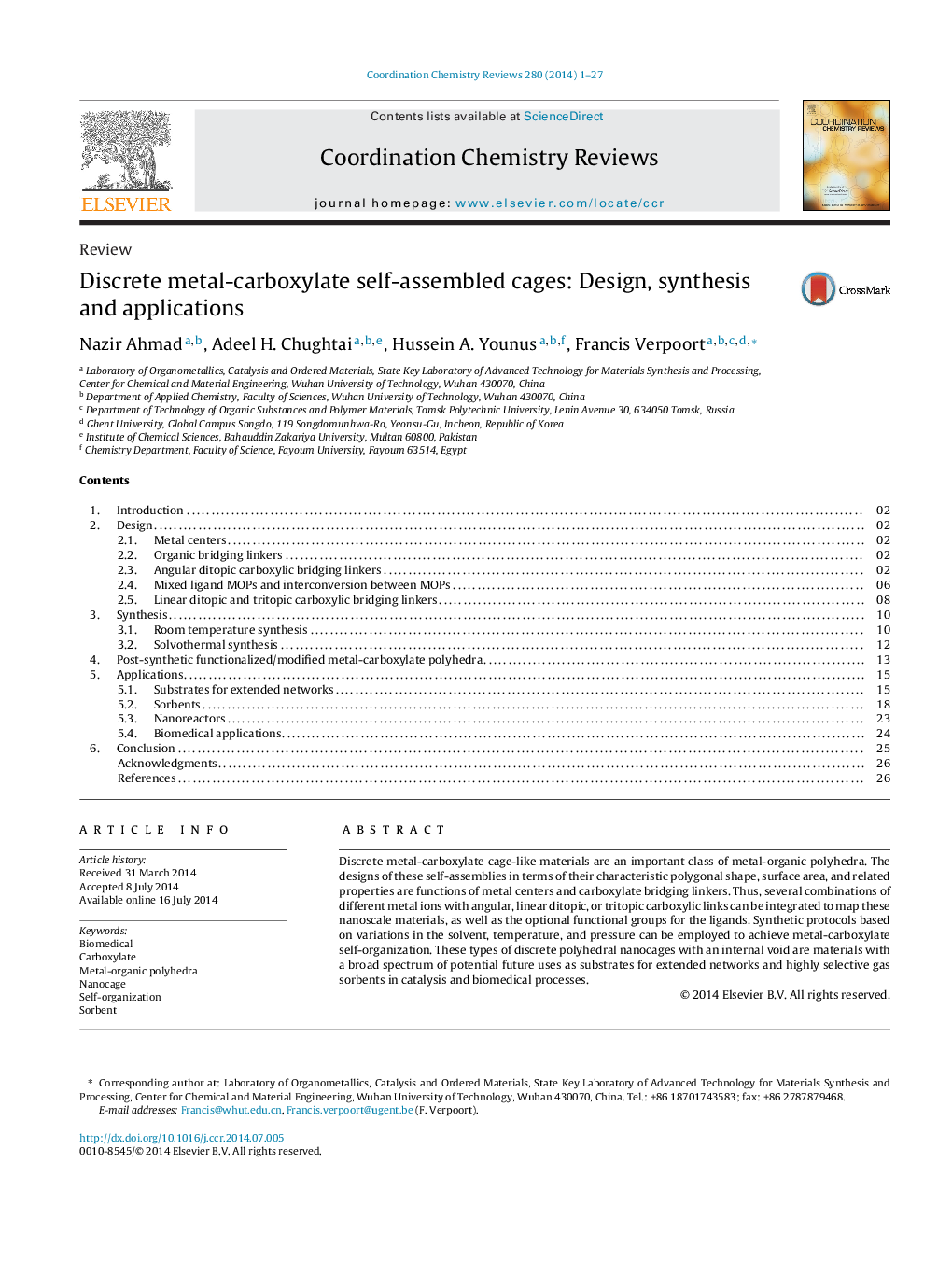| کد مقاله | کد نشریه | سال انتشار | مقاله انگلیسی | نسخه تمام متن |
|---|---|---|---|---|
| 1299396 | 1498737 | 2014 | 27 صفحه PDF | دانلود رایگان |
• Self-assembled metal-carboxylates of angular/linear di- and tritopic linkers are discussed.
• Mixed ligands, interconversion, and postmodifications of nanopolyhedra are addressed.
• Crucial synthetic protocols for metal to ligand self-organization are summarized.
• Potential applications via molecular guest encapsulation mechanism are reported.
• These nanocages serve as substrates for extended networks, in sorption, catalytic, and biomedical processes.
Discrete metal-carboxylate cage-like materials are an important class of metal-organic polyhedra. The designs of these self-assemblies in terms of their characteristic polygonal shape, surface area, and related properties are functions of metal centers and carboxylate bridging linkers. Thus, several combinations of different metal ions with angular, linear ditopic, or tritopic carboxylic links can be integrated to map these nanoscale materials, as well as the optional functional groups for the ligands. Synthetic protocols based on variations in the solvent, temperature, and pressure can be employed to achieve metal-carboxylate self-organization. These types of discrete polyhedral nanocages with an internal void are materials with a broad spectrum of potential future uses as substrates for extended networks and highly selective gas sorbents in catalysis and biomedical processes.
Figure optionsDownload high-quality image (131 K)Download as PowerPoint slide
Journal: Coordination Chemistry Reviews - Volume 280, 15 November 2014, Pages 1–27
